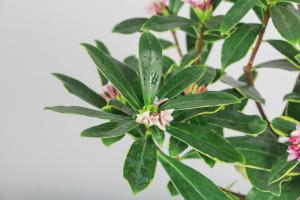1、 Is it suitable for indoor breeding
It is suitable for keeping indoors. It doesn't have any volatile smell and won't bring any harm to people's skin, and it's OK even if it touches its epidermis. In addition, it can absorb CO2 and release a lot of O2 at night, which is not harmful to people's body, so it can be placed in the living room or bedroom

2、 How to raise it indoors
1. Temperature: it likes a warm environment. Usually, the best growth temperature is between 15 and 32 degrees, and it is afraid of heat. When the temperature exceeds 33 degrees in summer, it will enter a dormant state. In addition, it is afraid of cold. In winter, it needs to keep the temperature above 10 degrees. If it is lower than 7 degrees, it will also enter the state of dormancy. If the temperature drops to 4 degrees, it may die
2. Sunshine: it likes the sun very much. If the light is insufficient, the leaves will fall and the roots will rot. therefore, when raising it indoors, it needs to be placed in a place with sufficient light, but in summer, it should be properly shielded from the sun

3. Watering: in spring and autumn, it can be watered once a day or two, but not too much. Then wait until summer, stop watering and cool it appropriately, such as spraying water on its leaves and paying attention to ventilation. In winter, reduce watering and keep the basin soil dry
4. Fertilization: it doesn't have high requirements for fertilizer, and even controls the amount of fertilizer, so it generally doesn't fertilize much, but if it grows too slowly, it can add some liquid fertilizer containing potassium once a month
5. Pruning: when it grows, prune the branches that are too long or too dense in time to maintain a good plant shape< span>


 jackfruit
jackfruit snake plant
snake plant hibiscus
hibiscus hydrangea
hydrangea lavender
lavender Green roses climb al...
Green roses climb al... If you don't pay att...
If you don't pay att... Management of four g...
Management of four g...



































